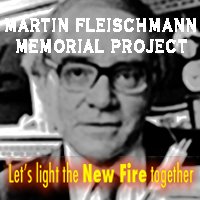The following is a slightly modified google-translate of the original article in Italian by Roberta De Carolis and published by http://www.nextme.it/.
Cold fusion generates heated debates and discussions, but the Martin Fleischmann Memorial Project (MFMP) was officially nominated for the Nobel Prize for Peace in 2014. Rather, they were nominated for the working group which also includes the Italian Francesco Celani, for years engaged in the construction of a LENR device.
“I am pleased to inform you that next Saturday, June 28, 2014, starting at 09:00 am, will be held in Assisi, the City hall, a Scientific Meeting […]” – announced in an e-mail the researcher of – “in which there will also be information dissemination, by Prof. Francesco Bindella, a candidate for the Nobel Prize for Peace in 2014 for the group’s work and MFMP for the writer.”
The nomination for the prestigious award was sought and obtained by the method ‘Live Open Science‘, based on “open” and visible research. “Experiments in Europe and the U.S., are conducted under the watchful eye of several cameras and networked in real time,” explains Claudio Pace, who organized the event.
A topic such as cold fusion, on the other hand, for decades puzzling with the confidentiality in which the tests were carried out and the devices realized, first of all the E-Cat of Andrea Rossi, covered by secrecy almost always. But this was also the subject of direct accusations against the R5 device by the same CEO of Defkalion Europe Franco Cappiello.
Martin Fleischmann Memorial Project aims to counter this, attempting to create collaboration between the scientific community, as well as an engine for development of a new energy source with low environmental impact. The expectations of the working group methodology allow observers, even those tens of thousands of miles away, to assess the quality of the experiment, and especially, to provide any suggestions and/or criticisms in real time.
 According to the researchers, this has allowed the true progress in a field of research that generally inspires suspicion, and a first indication in this direction would be the number of website “hits qualified” (ie made by experts in the field) now exceeds one million units.
According to the researchers, this has allowed the true progress in a field of research that generally inspires suspicion, and a first indication in this direction would be the number of website “hits qualified” (ie made by experts in the field) now exceeds one million units.
Besides, even UNESCO has spoken officially about promoting Open Access, the online availability of scientific information to all, free of most copyright licenses and barriers, for the benefit of a global flow of knowledge, innovation and socio-economic development. Also, other areas appear to move in this direction.
Can we really say goodbye to patents and trade secrets, and therefore say the future is open source?
Roberta De Carolis
***********************************************************************
Here is a video in Italian showing the interview candidates for the Nobel Prize for Peace Professor Francesco Celani and Eng. Mathieu Valat and presented by Prof. Francesco Bindella.


But Stanley Pons is still alive.
http://en.wikipedia.org/wiki/Stanley_Pons
Open source science is an example of the ‘shared economy’ in developedment, in many areas today. A friend recently reminded me that science used to operate completely in the spirit of open source. This was long before science was employed towards weapons production and market control (the science of industry).
Open source science has the potential to exponentialy improve scientific review. Scientific review takes place only in the laboratory when another seeks to replicate experimental protocol, seeking to improve the accuracy of instrumentation which improves observation. Theories may be put forth which seek to improve protocol or understanding.
The open source science quote, “expectations of the working group methodology allow observers, even those tens of thousands of miles away, to assess the quality of the experiment, and especially, to provide any suggestions and/or criticisms in real time.” is worth reflecting on.
Open source science is an example of the ‘sharing ecomomy’ in development in many areas today. A friend recently reminded me that science was wholely operated in the spirit of open source long before being employed toward weapon development and market control (science of industry).
Open source science has the potential to exponential improve scientific review and speed of discovery and application. Scientific review only takes place in the laboratory when another replicates experimental protocol while improving on instrumentation which improves observational abilities. Theories may be put forth to improve protocols and understanding.
The open sorce science ability to, “allow observers, even those tens of thousands of miles away, to assess the quality of the experiment, and especially, to provide any suggestions and/or criticisms in real time.” is worth reflecting upon. What competative edge does this give to the process of scientific dicovery to those who employ it? The true value is in in its’ effectiveness, which understand, requires one’s concept of economy to shift.
It is a complex subject.
Real innovators often don’t use much IP protection , but fund their model on speed and competitive advantage based on know how.
IP protection is often either asked by coward investors (bank,fund) or is used by installed business in the hope to create an economic rent and protect it.
In fact science is also split between those who share and those who want to keep.
Charles Beaudette explains why at the beginning, F&P could not share much of their secrets because of University of Utah (resonable) desire to benefit from their discovery…
my feeling is that the Ivy league did not appreciate to be put aside the revolution and instead of admitting they needed more data they bashed the authors. that is what happen in business when a small startup try to protect their finding facing a big monopoly…
we should stop opposing busines with science, NGO with business…
there is only two camp: the fast moving innovators, and the rent seekers/benefactors…
you find them as NGO, business, academic, workers
Has someone already looked ar the Swedish Defence FMV article for the commentary on the e-Cat devices of A. Rossi and has someone already considered the use of liquid lithium in combination with bombarding protons yielding aneutronically helium and 17.3 keV energy? Liquid lithium has been used in laser fusion (US patent of Fraas).
Interesting that the DoE adopts a real time science model to speed up discovery to commercialization.
The Joint Center for Energy Storage Research, or JCESR, based at Argonne, is a partnership of five national laboratories, five universities, and four private-sector partners. The goal is to develop technologies that take batteries beyond lithium-ion—to create storage systems with five times the energy density at one-fifth the cost within five years.
http://phys.org/news/2014-07-future-batteries-qa-director-national.html-director-national.html#jCp
Crabtree: In the science community, we typically share information by publishing papers. So, after the information is created, it takes about a year for the paper to be peer-reviewed, for it to appear in the literature and for someone else to read and appreciate it. Then the recipient will think about it for a while before starting to act on it. By the time he or she starts a program to move the science to the next level or to apply the information to new technology, there could be a two-year delay.
.
In JCESR there is no delay. Results are communicated and adopted by other groups within the JCESR team instantaneously, well before the cycle of publication and incubation has time to act. This is one of the primary ways we increase the pace of discovery and innovation.
Read more at: http://phys.org/news/2014-07-future-batteries-qa-director-national.html#jCp
SUPERNOVA POWER!
Chemonuclear Fusion is a type of low energy nuclear fusion that has been shown to produce energy in two experiments. Aneutronic nuclear fusion can provide unlimited electric power without polluting the environment with radioactive waste and greenhouse emissions. Chemonuclear processes in small dense white dwarf stars accelerate the rate of nuclear fusion and cause them to explode in spectacular supernova explosions.
The mission of the Chemonuclear Fusion Project is to raise awareness of this new and vitally important source of environmentally clean energy and to promote research and development.
The Chemonuclear Fusion Project is soliciting volunteers to help our crowdfunding and educational campaigns. Our crowdfunding webpages will soon be up and running. We want people to post to discussion groups and help us get the word out that aneutronic chemonuclear fusion might be the radiation free way to power the world if we can get the funding to build and test reactors.
Artists can help us design T-shirts, mugs, and promotional items to sell and give away to our contributors. Writers to write promotional materials and post to web forums are also wanted. Video producers and professional and amateur scientists who can help the public understand the concepts of chemonuclear fusion are encouraged to contact us also.
Visit our facebook page and give us a like. We welcome your comments and questions!
https://www.facebook.com/chemonuclearfusionproject